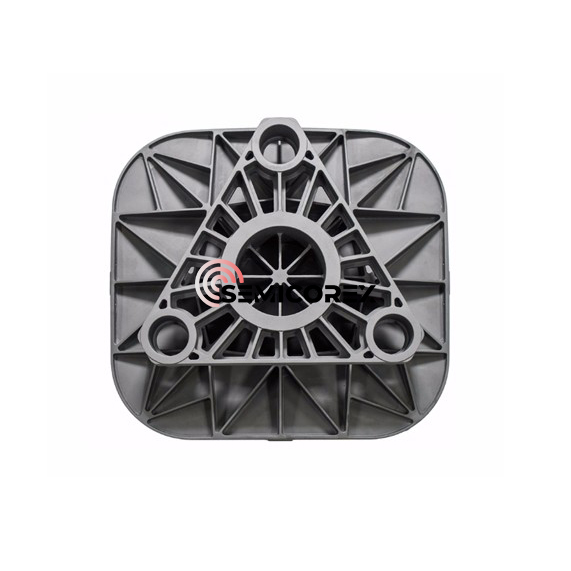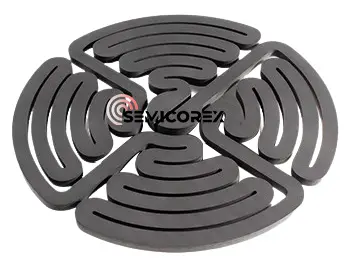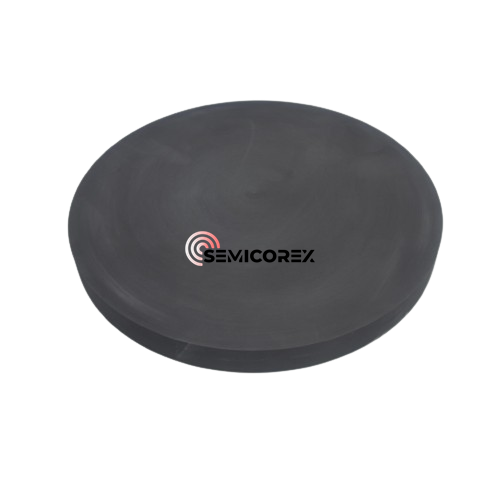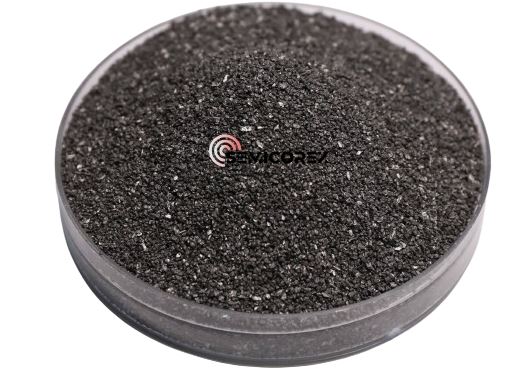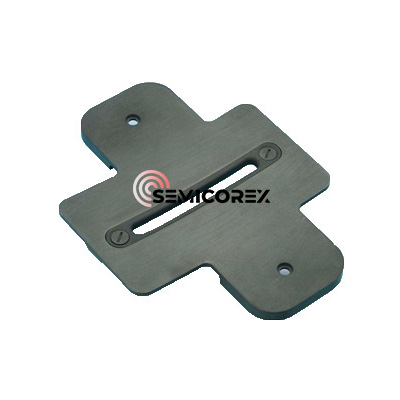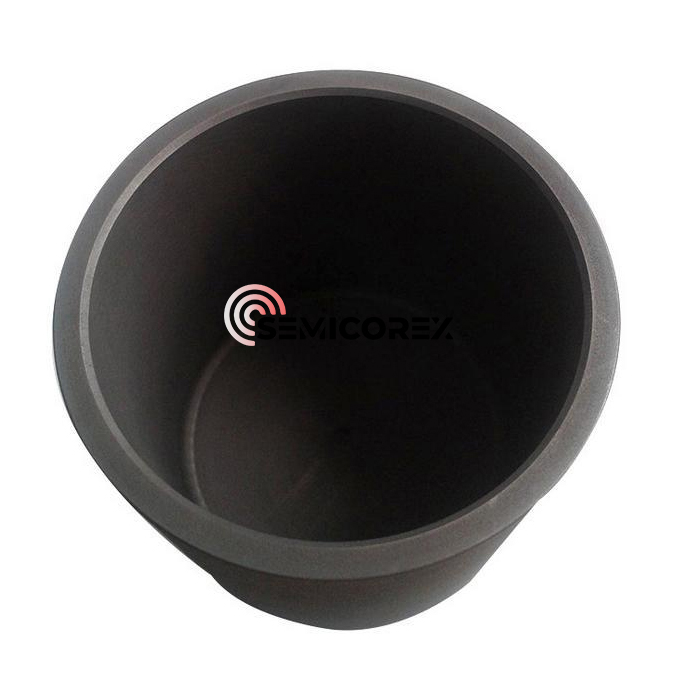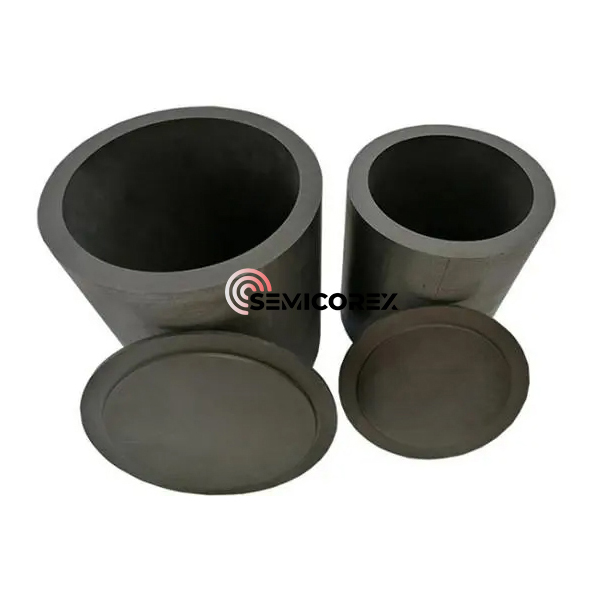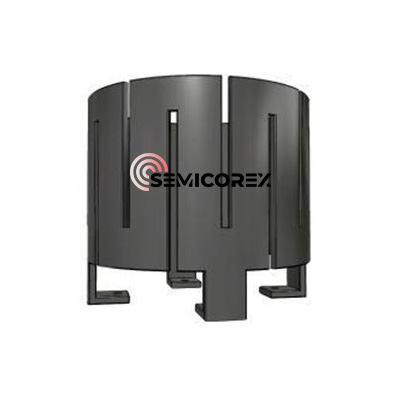
- English
- Español
- Português
- русский
- Français
- 日本語
- Deutsch
- tiếng Việt
- Italiano
- Nederlands
- ภาษาไทย
- Polski
- 한국어
- Svenska
- magyar
- Malay
- বাংলা ভাষার
- Dansk
- Suomi
- हिन्दी
- Pilipino
- Türkçe
- Gaeilge
- العربية
- Indonesia
- Norsk
- تمل
- český
- ελληνικά
- український
- Javanese
- فارسی
- தமிழ்
- తెలుగు
- नेपाली
- Burmese
- български
- ລາວ
- Latine
- Қазақша
- Euskal
- Azərbaycan
- Slovenský jazyk
- Македонски
- Lietuvos
- Eesti Keel
- Română
- Slovenski
- मराठी
- Srpski језик
Kina Isostatisk grafit producenter, leverandører, fabrik
Carbon/graphite material molding essentially involves increasing the density of the powder mixture and ensuring close contact between the aggregate and binder to produce a green body with a desired size, morphology, and minimal machining allowance. The four main molding methods are extrusion, compression molding, vibration molding, and isostatic pressing. Common carbon/graphite materials on the market (for example, charcoal used for household fires) are mostly formed using hot extrusion and compression molding (cold or hot). Isostatic pressing offers superior molding performance.
The principle of isostatic pressing is based on Pascal's law: pressure applied to a medium (liquid or gas) in a sealed container is uniformly distributed in all directions, with the pressure on the surface being proportional to the surface area. Isostatic pressing involves placing a sample, enclosed in a sealed container, within a high-pressure cylinder. Leveraging the incompressible nature of the liquid medium and its ability to uniformly transmit pressure, the sample is uniformly pressed from all directions. When the fluid is injected into the cylinder, the pressure is evenly transmitted in all directions according to the principles of fluid mechanics. The sample in the cylinder is then subjected to uniform pressure in all directions.
Due to the isostatic pressing method, isostatically pressed graphite exhibits excellent isotropy, with properties independent of shape, size, or sampling direction. The material possesses a dense microstructure, high mechanical strength, high surface hardness, and oxidation resistance. Strong performance and high-temperature resistance; the material has excellent thermal shock resistance and is less susceptible to cracking under rapid cooling and heating conditions.
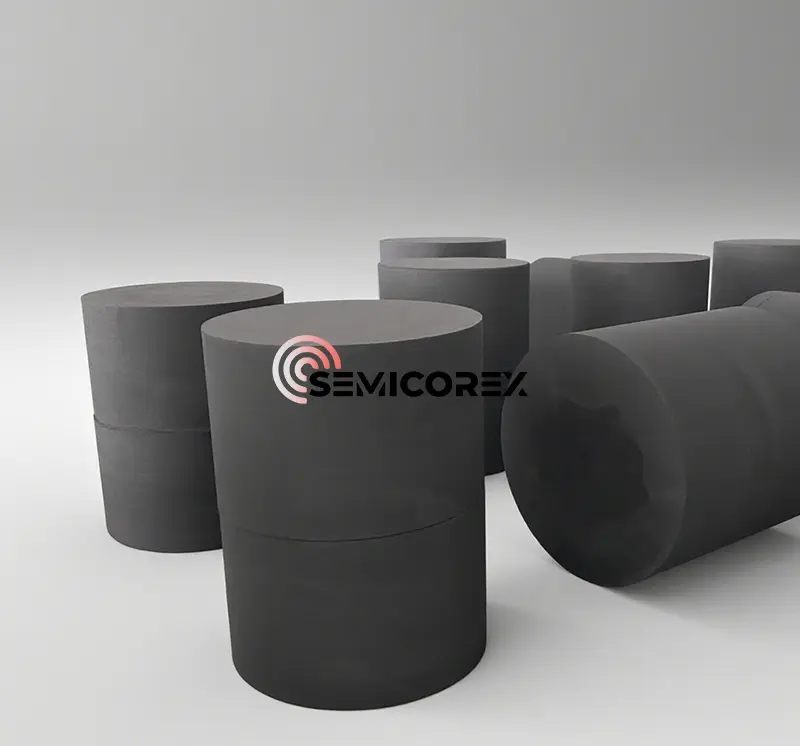
1. Isotropy
Different molding methods result in different properties in different directions. This is primarily reflected in resistivity, thermal conductivity, mechanical properties, and thermal expansion coefficient. The general measurement method is to sample the product perpendicular to and horizontally from the pressure surface, measure the properties separately, and then divide the smallest value by the largest value to obtain the isotropy ratio.
Traditional carbon/graphite products exhibit significant anisotropy, i.e., the properties of the product are different in the directions perpendicular to and horizontal to the pressure surface. The corresponding difference in performance is generally greater than 1:1.1, hence the term anisotropy. In many cases, this difference is fully exploited, and the greater the difference, the better. Examples include graphite electrodes for steelmaking and brushes for motors. Many applications, such as EDM and single-crystal silicon thermal field applications, increasingly require carbon/graphite products to exhibit isotropy (with an orientation ratio within the 1:1.05 range).
2. Large Dimensions
The market is increasingly demanding larger product sizes. For example, single-crystal silicon products have grown from 6- and 8-inch sizes to 12-inch sizes. The size of graphite materials used in thermal fields is also increasing. This is also increasing. Similar trends are seen in other related industries. Graphite for EDM, continuous casting, and nuclear reactors also requires large-scale products. This is difficult to achieve using molding and extrusion methods. The primary problem with large-scale product production is calcination cracking, and the larger the product, the higher the chance of calcination cracking.
3. Fine Structure
As a structural material, it requires high physical and chemical properties. On the one hand, the finer the particle size of the carbon particles that make up the carbon/graphite material, the denser its texture and the higher its mechanical strength.
Isostatically pressed graphite is widely used in semiconductor manufacturing processes. It is used in graphite components for the hot zone of single crystal growth furnaces, such as crucibles, heaters, flow guides, and insulation covers; and in graphite components used in epitaxial processes.
- View as
Grafit dele
Semicorex isostatiske grafitdele bruges hovedsageligt til grafitdigler i krystalvækstprocessen, højrent grafit med tre kronblade og TaC-belægningsapplikationer. Semicorex er forpligtet til at levere kvalitetsprodukter til konkurrencedygtige priser, vi ser frem til at blive din langsigtede partner i Kina*.
Læs mereSend forespørgselKulstofpulver med høj renhed
Semicorex High-purity Carbon Powder fungerer som en afgørende forløber i syntesen af højrent siliciumcarbid (SiC) pulver og andre solid-state carbid materialer. Det sikrer den renhed og kvalitet, der kræves til avancerede applikationer i halvleder-, elektronik- og keramikindustrien. Vi hos Semicorex er dedikerede til at fremstille og levere højtydende kulstofpulver med høj renhed, der forener kvalitet med omkostningseffektivitet.**
Læs mereSend forespørgselIonimplantationsdele
Semicorex ionimplantationsdelene, der er lavet af grafitkomponenter med høj renhed, er konstrueret til at opfylde de strenge krav fra halvlederfremstilling, specielt til brug i ionimplantationsudstyr. Disse komponenter har flere kritiske fordele, der gør dem ideelle til højtydende applikationer. Vi hos Semicorex er dedikerede til at fremstille og levere højtydende ionimplantationsdele der kombinerer kvalitet med omkostningseffektivitet.
Læs mereSend forespørgselDigler til krystalvækst
Semicorex-digler til krystalvækst er uundværlige for at opnå kontrolleret enkeltkrystalvækst, grundlæggende for fremstilling af halvlederenheder. Disse digler er omhyggeligt designet til at opfylde de strenge standarder for halvledersektoren, hvilket sikrer maksimal ydeevne og effektivitet på tværs af alle applikationer. Vi hos Semicorex er dedikerede til at fremstille og levere højtydende digler til krystalvækst, der forener kvalitet med omkostningseffektivitet.
Læs mereSend forespørgselIsostatiske grafitdigler til smeltning
Semicorex isostatiske grafitdigler til smeltning fremstilles ved hjælp af isostatiske presseteknikker, som forbedrer deres materialetæthed og mekaniske egenskaber. Dette resulterer i en beholder, der ikke kun modstår de ekstreme temperaturer og korrosive miljøer, der er typiske for halvlederbehandling, men som også tilbyder langtidsholdbarhed. Diglernes robusthed sikrer, at de kan håndtere gentagne termiske cyklusser uden forringelse, og derved give ensartet ydeevne over længere driftsperioder. Vi hos Semicorex er dedikeret til at fremstille og levere højtydende isostatiske grafitdigler til smeltning, der forener kvalitet med omkostningseffektivitet.
Læs mereSend forespørgselSafir krystal vækstvarmer
Forøg din kapacitet til præcis termisk styring med Semicorex Sapphire Crystal Growth Heater. Denne varmeovn, omhyggeligt designet til optimal ydeevne, kan prale af en SiC-lagintegration, der styrker dens rolle som et overlegent element i krystalvækstoperationer, hvilket fremmer både høj effektivitet og pålidelighed. Vi hos Semicorex er dedikeret til at fremstille og levere højtydende Sapphire Crystal Growth Heater der kombinerer kvalitet med omkostningseffektivitet.
Læs mereSend forespørgsel
